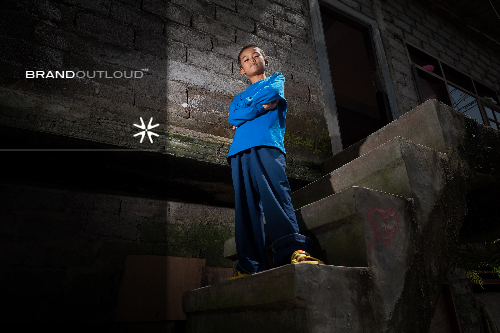Local NGOs often rely heavily on funding from international NGOs. The government cutbacks announced in the Netherlands give cause for more careful thought about how international NGOs with less money can continue supporting local partners. Non-profit organisation BrandOutLoud suggests a new approach: Empowering aid organisations through branding and marketing.
Change for sustainable development
The fact that cuts can also be an impulse for positive change is something that is increasingly heard in development aid circles. While direct funding is an option, decentralising can also be part of a new approach. Courage is required to seek inspiration from other angles, let go of control and learn more from management and marketing theories. One thing is for sure, cuts or no cuts, change is needed to guarantee sustainable development.
Creating support and raising funds independently
Financial support is always necessary to a certain extent but recent developments have shown that local NGOs need to be able to generate support and raise funds independently. Only then will they be able to continue their good work and become more sustainable organisations in the long term, regardless of cuts in aid budgets.
Own voice
But how? While international NGOs have access to internal or external marketing and communication experts, local NGOs have no such opportunity or capacity. Moreover, they are often portrayed as ‘the projects of foundation X’ or can be found on ‘the website of foundation Y’? Yet every local aid organisation, however small, has its own story to tell. This is its voice…Its brand identity.
BrandOutLoud sees the shaping of this story as a deliberate choice. No portraits of sad distressing cases, but a positive approach in which powerful imagery is the key. Here the focus is on the empowerment and opportunities of the people being helped by the aid organisation. The story is a source of inspiration to others.
Knowledge and tools
Using their story and knowledge, BrandOutLoud supports local aid organisations with their branding, marketing and communication. Over a period of three months on-site and in close partnership with the aid organisation, BrandOutLoud develops a tailor-made communication strategy, including brand identity and tools, which can be directly deployed. Sharing knowledge and developing practical tools are the key elements for sustainable development aid in which empowerment of the local aid organisation is the core.
A strong profile and professional marketing communications will enable local aid organisations to reach out on their own, create new partnerships and diversify their funding. In addition to developing various promotional materials such as a website, tutorials and clinics will raise awareness of their own brand identity and information is provided on the local aid organisation’s communications. The work on-site will be closely monitored and evaluated for two years.
An example
BrandOutLoud recently finished a project with a local aid organisation in Cambodia. In collaboration with its financial partner CBM CEARO in Bangkok, BrandOutLoud developed the foundation’s branding, design and communications. The aim of this project was to provide this local aid organisation with a stronger profile so as to reach out independently to international donors and supporters. As a result it is now promoting itself proudly with a new professional look and the right tools in place, including a website and strong imagery.
CBM sees branding of local partners as a shared investment for more financial sustainability. A strong profile and branding of a partner helps them to achieve their goals and, indirectly, those of CBM itself. The collaboration between CBM and BrandOutLoud will therefore be continued in order that other projects can be professionalised.
Chances
BrandOutLoud opts for a positive approach that leverages on opportunities and strengths. Development aid needs to change and the time has come for local aid organisations to raise their own voice and become financial sustainable and independent organisations. After all, if nothing ever changed, there’d be no butterflies.








